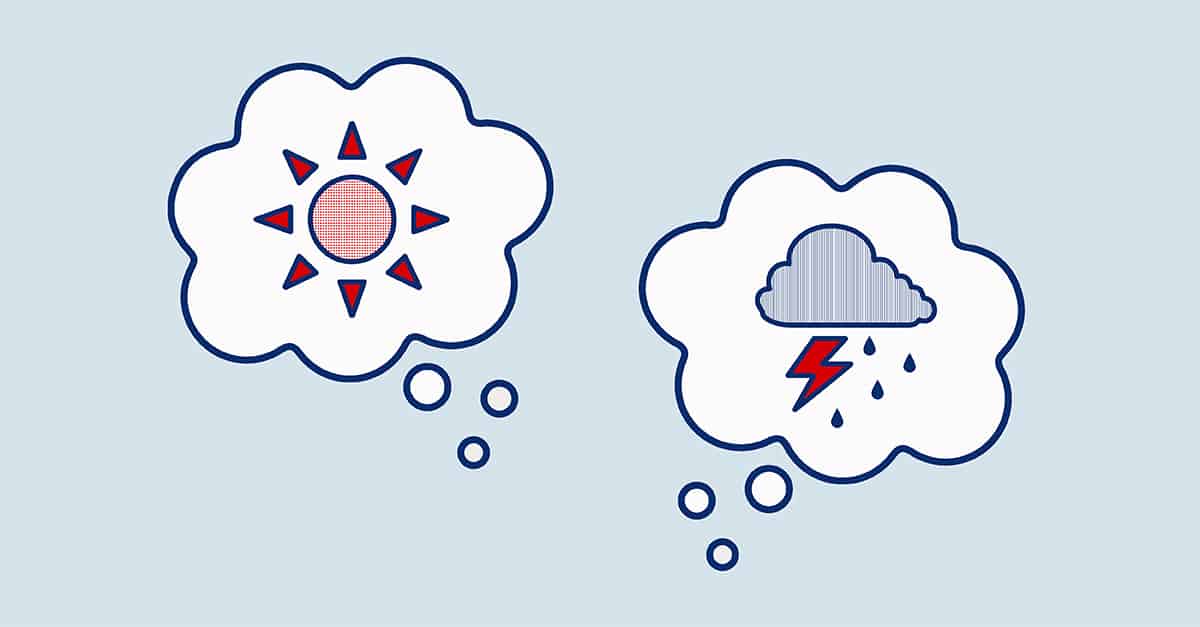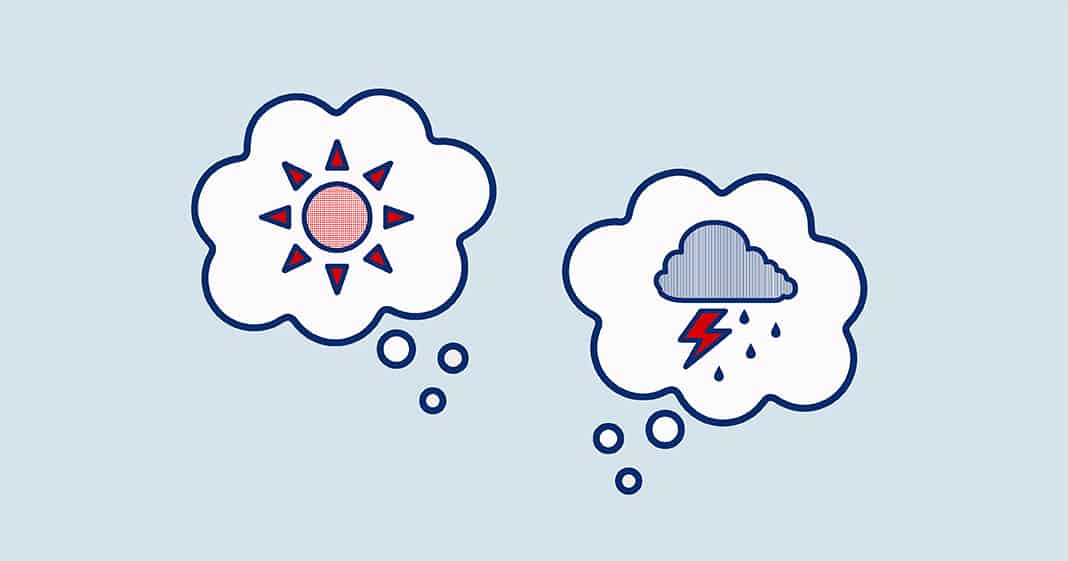The word hormone comes from the Greek hormo, meaning to move forward. That’s appropriate because these powerful chemicals keep every part of the body working properly. Estrogen and progesterone, the primary female hormones, are essential for reproduction, growth, metabolism, and immune function. However, their constant fluctuation may also wreak havoc on the way many women feel.
In an analysis of 41 published studies of women’s daily moods, more than half found a link between bad moods and menstruation. Moreover, women in the Penn Ovarian Aging Study reported an increase of depressive symptoms as they transitioned into menopause. If you feel like you’re on a hormonal roller coaster, read on to learn what research suggests about hormonal mood swings, and discover natural ways to feel better no matter where you are in your cycle or life.
Ebbs and Flows
When it comes to women and mood, it’s hard to separate biology from culture. For a long time, menstruation-related research lagged behind due to stigma. Fortunately, researchers take women’s health more seriously now. However, the available research demonstrates just how little we understand and more studies are needed to better determine how the menstrual cycle impacts mood. Blaming bad moods on premenstrual syndrome (PMS) is so common it’s become a joke. Strikingly, only 13.5 percent of studies in the above-mentioned analysis identified bad moods as corresponding with the pre-menstrual phase.
One thing is clear: Mood swings aren’t usually related to hormone imbalances. Women who report cyclical mood swings usually have normal levels of hormones but seem to be more sensitive to hormonal fluctuations. A small study of women diagnosed with premenstrual dysmorphic disorder (PMDD), a syndrome characterized by extreme mood symptoms, suggests these women’s cells may react differently to hormones than cells of women without PMDD. Researchers are not sure why.
Whatever the cause, it may be easier to ride hormonal ups and downs when you recognize them as predictable and temporary. According to Dr. Christiane Northrup, many women experience similar, subtle shifts in mood during the four phases of the menstrual cycle, moving from optimism at the beginning to enthusiasm mid-cycle, then reflection and reactivity at the end of the cycle. Some research supports Northrup’s observation; for instance, women are more reactive to emotional stimuli in the luteal phase. Jing Jin, founder of CycleHarmony.com, relates these subtle emotional shifts to seasonal cycles in the natural world.
Balancing Act
If you feel like your hormones are holding you hostage, some relatively simple lifestyle changes may help.
1. Pay attention
Keep a diary of your symptoms for a few months. All women are different, and the only way to understand your moods is to record them and analyze the data. It may bring relief to observe that cyclical annoyances don’t usually last long.
2. Eat up
Studies suggest women with PMS may be deficient in calcium and magnesium. Foods rich in vitamin B6, omega 3 fatty acids, and zinc may also help prevent mood swings, according to some experts. It can’t hurt to eat a more nutrient-dense diet. Reach for vegetables, leafy greens, beans, seeds, nuts, legumes, whole grains, poultry, seafood and seaweed, and fish.
3. Improve sleep habits
Some women report insomnia before menstruation, which is when estrogen and progesterone levels plummet; 40 to 50 percent of women experience insomnia during menopause. Women with sleep disturbances are more likely to feel stressed out, tense, anxious, or depressed. To improve your odds of a good night of sleep, make your room dark, quiet, and cool, and stick to routine sleep and waking times.
4. Move more
In one study, eight weeks of aerobic training significantly reduced participants’ premenstrual symptoms. Choose physical activities you enjoy since the point is to feel good.
5. Manage stress
Women who experience stress early in a menstrual cycle are more likely to experience mood swings later in the cycle, according to a study. Walking, mindfulness exercises, visiting nature, and hanging out with friends are proven ways to reduce stress.
6. Reduce caffeine and alcohol
In studies, caffeine has been shown to decrease feelings of relaxation and increase ratings of anxiousness, tenseness, and nervousness. Alcohol may interfere with estrogen detoxification (which could be why it’s associated with a higher risk of breast cancer). Reach for a drink, such as water or herbal tea, that helps you feel calm.
If you experience mood swings that interfere with your daily life and these healthy makeovers don’t help, it may be time to check in with your doctor or naturopath. Herbs, such as chaste tree and red clover, vitamin supplements, or medical treatments may help.
Conclusion
Hormonal cycles should not be used to discount or discriminate against women or medicalize normal life changes. However, it doesn’t serve women to pretend our bodies and moods stay constant through the course of a lifetime. Whether the subject is menstruation, menopause, moods, or other topics, we should take women’s health seriously. Recognizing and understanding hormonal fluctuations may help women move through their lives with more awareness and ease.


